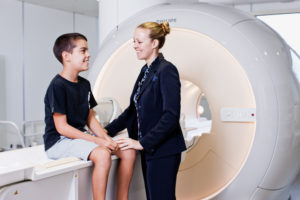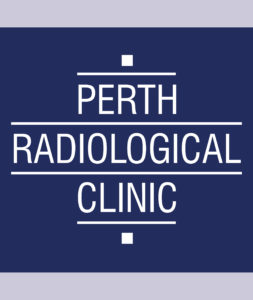 This week marks the second of our four-part series in association with Perth Radiological Clinic on the indications and interpretation of the Medicare rebatable MRI scans, a GP can request. This week we are focusing on GP rebatable MRI musculoskeletal studies in children, including knee, hip, elbow, wrist and spine.
This week marks the second of our four-part series in association with Perth Radiological Clinic on the indications and interpretation of the Medicare rebatable MRI scans, a GP can request. This week we are focusing on GP rebatable MRI musculoskeletal studies in children, including knee, hip, elbow, wrist and spine.
Dr Peter Counsel is a Musculoskeletal and Paediatric Radiologist working at Princess Margaret Hospital/Perth Children’s Hospital and Perth Radiological Clinic. He has completed a musculoskeletal fellowship focusing on elite sports imaging and intervention at Imaging @ Olympic Park in Melbourne, Victoria. He has a dual subspecialty, having also completed a paediatric radiology fellowship and has interests in paediatric and adolescent musculoskeletal imaging in addition to adult sports imaging.
When do children need a General Anaesthetic when undergoing an MRI scan?
From a practical point of view, if the child’s parent and the GP think they are cooperative enough to lie very still for 20 minutes, most of the time the scan can be performed successfully. The parent can be in there with them for reassurance. For children under age 6, we ask that referrers contact us to discuss the case. Other things to consider include:
- Neonates/young infants can usually be scanned without anaesthetic as they sleep.
- From about 3 months corrected age general anaesthetic is usually required.
- Some 4 yr olds (very occasionally age 3) and most 5 and 6 yr olds can avoid GA.
- This is child dependent, and preparation can help. Videos are available on the internet that help prepare children for the MRI experience.
- Condition dependent – motion less of a detriment for some queries.
- Staff dependent – patience.
- Certainly no need for a “all kids under 6 have GA” policy.
When is MRI useful in musculoskeletal conditions in children?
- MRI is usually the most sensitive imaging modality for exclusion of serious causes of musculoskeletal pain such as neoplasia and infection.
- MRI can show injury to the unossified cartilage structures such as cartilaginous epiphyses and apophyses in small children as well as primary and apophyseal growth plates in all children.
- Occult bony injury (such as scaphoid fracture) can be demonstrated by MRI without the time delay required for x-rays following immobilisation.
- Stress fractures can be seen earlier at MRI, before x-ray findings develop. Specialised cortical bone sequences for pars stress fractures may help avoid radiation from subsequent CT.
- Most of these indications would qualify for a Medicare rebatable GP referred MRI study that can be bulk-billed if required. Although important, rebates unfortunately don’t apply for exclusion of neoplasia for all body sites.
(To view the presentations below in full screen- click on the icon at the bottom right corner of the presentation)
What are common abnormal findings on MRI Knee in children?
What are common abnormal findings on MRI Hip in children?
What are common abnormal findings on MRI Elbow in children?
What are common abnormal findings on MRI Wrist in children?
What are common abnormal findings on MRI Spine in children?
We would like to thank Dr Counsel and Perth Radiological Clinic for taking the time to put together this very useful summary article. Users are welcome to leave comments below.


